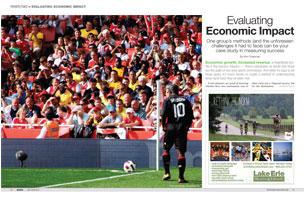
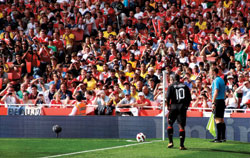 Economic growth, increased revenue, a heightened profile in the tourism industry -- there's absolutely no doubt that these are the goals of any area sports commission. And while it's easy to list those goals, it's much harder to create a method of understanding when (and how) they've been met. Event planners are good at knowing whether their own tournament, tour or other event was a financial success, but for the destination, making those calls is a lot more complex.
Economic growth, increased revenue, a heightened profile in the tourism industry -- there's absolutely no doubt that these are the goals of any area sports commission. And while it's easy to list those goals, it's much harder to create a method of understanding when (and how) they've been met. Event planners are good at knowing whether their own tournament, tour or other event was a financial success, but for the destination, making those calls is a lot more complex.
The data you know
In simplest terms, making good judgments starts with having good numbers to show what an event can bring in. It is essential to measure meaningful data, which, of course, means examining the revenue stream, drop by drop. Remember that many things will need to be considered once the event is underway (and once it wraps up), including the following:
Transportation
Facility rental/usage fees
Catering/concessions
Advertising
Rooming
Entertainment
Admission fees paid by spectators (not to mention souvenirs they purchase and so forth)
Restaurant usage by athletes and spectators
Personnel (including, but not limited to, support staff, maintenance, sports officials, logistics planners and more)
Equipment rental (tables, chairs, bleachers, timing equipment, etc. as necessary)
...and a whole lot more
It goes without saying that accuracy in compilation of such figures is an absolute must. It also goes without saying that the mathematical data we gain from these types of studies can be extremely valuable to the host city (and to any potential host city) who wants to know, for example, how much they stand to gain from a particular event. Whether the event is a softball tournament, a wrestling meet or even something more esoteric such as an arm-wrestling championship, the host city will want those figures when it decides whether an event will be a good fit for what it has to offer.
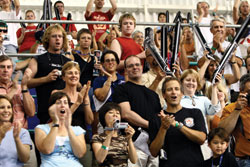 What else can we say about this kind of data? It encourages cities to invest in the kind of facilities that will attract and keep sports business. For example, everyone is familiar with the fact that college programs with great facilities generally attract better athletes than those offering what are at best only mediocre accommodations. (And of course, even more know the model of the pro sports clubs whose owners are able to have new stadiums built by threatening to move the franchise elsewhere). In the sports destination world, we see a form of this, only we like to think of it as a kinder, gentler way of doing things. Simply put, it's a way of providing incentive to the host city, which might resurface its tennis courts, do better upkeep on its parks, or even invest in better surfaces for its walking trails, in the hope of better accommodating the crowds that will be coming in for a particular event.
What else can we say about this kind of data? It encourages cities to invest in the kind of facilities that will attract and keep sports business. For example, everyone is familiar with the fact that college programs with great facilities generally attract better athletes than those offering what are at best only mediocre accommodations. (And of course, even more know the model of the pro sports clubs whose owners are able to have new stadiums built by threatening to move the franchise elsewhere). In the sports destination world, we see a form of this, only we like to think of it as a kinder, gentler way of doing things. Simply put, it's a way of providing incentive to the host city, which might resurface its tennis courts, do better upkeep on its parks, or even invest in better surfaces for its walking trails, in the hope of better accommodating the crowds that will be coming in for a particular event.
This type of arrangement, whether it's one facility (a pool, a tennis complex, a track and field facility, etc.) or a citywide improvement (which may even include expanded infrastructure) benefits far more than the event the city wants to host, however. Good cities with good facilities attract good events. The word spreads, and before you know it, you're not a well-kept secret; you're the next big thing. (We could say 'If you build it, they will come,' but that would be a cheap shot; the fact is that investing in the city pays you back in ways that will be reflected in economic impact statements for years to come).
Whether you're an event planner, a CVB or a sports commission, however, we're not telling you anything you don't know. We're all more than aware of the principle of spending money to make money, and of making the investments that pay off. We also know the importance of marketing the success of those great events. After all, if we advertise the success of our event in local trade magazines and at conferences of the individuals whose future events might be a good fit for our city, we find those individuals -- our desired market -- will sit up and take notice.
 These are all aspects of the planning process already familiar to those in the industry. But we have another way to look at the situation as well. While many destination organizations, such as sports commissions, rely on post-event information to evaluate the impact of that event, we believe that starting earlier, while the group is still considering your area, can create an even more useful snapshot. We have learned that the data you compile at the front end of the process, compared with the actual figure, can provide an excellent picture of the event as a whole and what it can mean and has meant to your area.
These are all aspects of the planning process already familiar to those in the industry. But we have another way to look at the situation as well. While many destination organizations, such as sports commissions, rely on post-event information to evaluate the impact of that event, we believe that starting earlier, while the group is still considering your area, can create an even more useful snapshot. We have learned that the data you compile at the front end of the process, compared with the actual figure, can provide an excellent picture of the event as a whole and what it can mean and has meant to your area.
Build a Foundation
Start from the ground up in determining the factors that can help make events a success. The ultimate goal, of course, is to recruit and service those events that can best benefit you, and to which (naturally) you can provide the most benefit in return. Our sports commission quickly determined the vital need for an evaluation process, which would allow us to place all events on the same playing field. In other words, there was a need to compare apples to apples.
Our group developed a grant application with specific criteria. These criteria focused on evaluation items that would eventually be used to determine the sports commission's success for the year. Criteria to be used included the following:
Room nights to be generated
Expected media coverage (ranging from national to local)
Type of media (television, print, radio)
Season (we are particularly interested in whether or not an event will occur during the area's peak summer season)
Bid event (which is an event requiring financial bid fees or other substantial investment to bring to the area),
Whether or not it is a new event to the area
Sponsorship opportunities (meaning whether there was a way to incorporate the sports commission's existing annual sponsors into this event and thus increase exposure and ultimately sponsorship fulfillment)
Note that these are the criteria that work for our organization, but may not be applicable to everyone.
Each of the criteria included various subcategories with assigned point values. For instance, one of the goals was to increase shoulder-season activity in the area by recruiting events outside of the peak summer season, since this is a beach destination. Thus an in-season event (occurring Memorial Day to Labor Day) was allocated two points while a non-season event would receive a value of 10 points. Along similar lines, an event resulting in 1,500 or more room nights would earn 15 points while an event generating 50-400 room nights would receive 3 points.
The more accumulated points an event earns on the criteria scale results in the possibility of increased event bid fees or grants. For example, if the event is already occurring in the area and is requesting support, the event is eligible for that support in various increments. Meanwhile if the sports commission staff is recruiting the athletic event to come to the Alabama Gulf Coast, the event is classified as a bid event and therefore eligible for a different level of support. The commission's advisory council meets monthly and reviews all applications, then approves event funding.
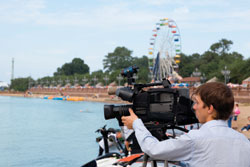 There are challenges inherent in the evaluation process. Some events, while competitions, lack a common denominator; for example, it is almost impossible to compare a tennis tournament to a fishing tournament. This grant system provides a fair way to do side-by-side comparison and determine appropriate funding. More importantly, it provides the ability to justify the funding decisions as the criteria are directly tied to our commission's evaluation methods, and we can positively influence our return on investment.
There are challenges inherent in the evaluation process. Some events, while competitions, lack a common denominator; for example, it is almost impossible to compare a tennis tournament to a fishing tournament. This grant system provides a fair way to do side-by-side comparison and determine appropriate funding. More importantly, it provides the ability to justify the funding decisions as the criteria are directly tied to our commission's evaluation methods, and we can positively influence our return on investment.
Another added bonus of this feature is the staff has a quick way to determine the value of an event and therefore knows which events need extra attention.
Making the process user-friendly is also essential; after all, coaches, event planners and others will need to be able to work their way through the application without difficulty. Providing a transparent, easy-to-use mechanism is a goodwill-builder for the potential client as well.
A Financial Hit Nobody Anticipated
The use of measurable criteria to evaluate the potential impact of an incoming client can mean a tremendous difference in setting realistic expectations and allocating resources. But even the very best plans can go awry, and for us, they did in a way nobody could have anticipated.
Our organization had been enjoying great growth as a result of our efforts: in 2008, the commission hosted 28 events that resulted in 10,081 room nights and a $3 million tourism impact (total spending), and in 2009, we saw 51 events generating 23,155 room nights and a $7.6 million tourism impact.
Then came 2010. The Gulf oil spill was a nightmare, and certainly a challenge nobody expected to face. It hit the hospitality industry (and just about everyone else) with tremendous force. What we learned, though, was the importance of working honestly to answer the questions of guests, including tournament directors and of course, the parents of young sporting event participants. And oddly enough, despite the fact that there was overall tourism dollar loss across the entire Gulf Coast region, our sports commission figures for 2010 were strong, with increases in event numbers, room nights and overall tourism impact.
Nobody wants an ecological disaster (or any other kind), and to have one on that scale presented us with our most challenging season to date. But the sporting groups who were visiting the area in the spring and fall found that the businesses here really noticed them, and gave them a lot of attention. And it's fair to say that if it hadn't been for those groups, there would have had even more economic loss.
Getting Back to Business
Despite the fact that things went far better economically than they could have, we were glad to put 2010, with its challenges and hardships, behind us. The organization continues to use its grant evaluation method since it has proven to be an efficient means of anticipating, and planning for, the economic impact each event can have on the area.
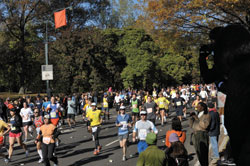 We can honestly state that effectively and consistently evaluating the potential economic impact of sporting events has been one and quite possibly the single most pivotal factor contributing to the success and growth of our sports commission. Through the development of precise standards of our grant application, we have seen our organization grow and produce many tangible results for the community.
We can honestly state that effectively and consistently evaluating the potential economic impact of sporting events has been one and quite possibly the single most pivotal factor contributing to the success and growth of our sports commission. Through the development of precise standards of our grant application, we have seen our organization grow and produce many tangible results for the community.
Based on the grant applications for events coming up in 2011, our commission is able to quantify its expectation for sporting events in the coming season, including aspects from media coverage to overall economic boost.
Checklist for event planners
Whether you're new to sports event planning, or simply interested in bringing your event to a new location, here are some essential pieces of information you'll need to compile prior to meeting with the sports commission or CVB. Note that this information can be helpful in filling out grant applications as well.
Type of sport
Applicable governing body (for example, NCAA, USTA, etc.)
Age of participants
Number of athletes
Number of others traveling with athletes (including parents/siblings, coaches, staff, etc.)
General facility needs (baseball diamonds, spectator seating, locker rooms, etc.)
Whether there will be need for local volunteers (approximate numbers, and in what capacities)
Arrival/departure dates
Within the arrival and departure, when you would like to compete (ideally)
Anticipated number of spectators
Whether you think participants will be interested in taking advantage of ancillary facilities in the area such as amusement parks, shopping, etc. (specify any preferences)
Whether or not your group has previously visited the area
Any history on room night use/spectators/media coverage, etc.
Date you anticipate making a decision on the facility
Contact information for you as the decision-maker
Number of rooms needed for athletes
Number of rooms needed for fans
Meeting room needs (coaches meetings, etc.)
Other special or specific needs
Basic Marketing Plan

